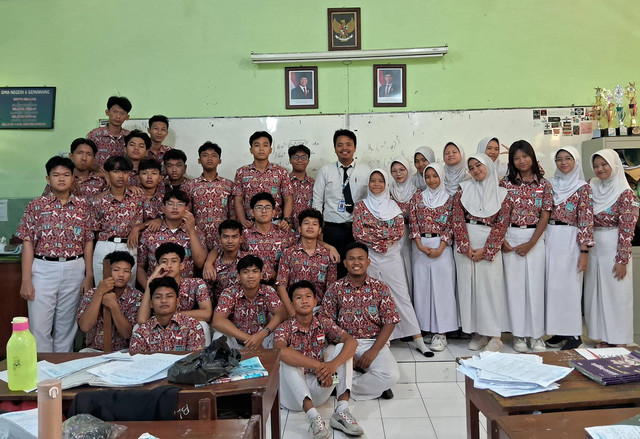Tentang KamiPedoman Media SiberKetentuan & Kebijakan PrivasiPanduan KomunitasPeringkat PenulisCara Menulis di kumparanInformasi Kerja SamaBantuanIklanKarir
2025 © PT Dynamo Media Network
Version 1.103.0
Konten dari Pengguna
Implementation of Differentiated Learning In View of Student Learning Styles
30 Desember 2024 15:45 WIB
·
waktu baca 3 menitTulisan dari Nabil Roy Mumtaz tidak mewakili pandangan dari redaksi kumparan

ADVERTISEMENT
Many students have significantly different learning styles and ways of absorbing learning materials. Almost all schools in Indonesia have students with varying learning characteristics. When children enter school, they bring their perceptions of things. Several factors need to be considered to teach problem-solving, including the time allocated for problem-solving, lesson planning, required learning resources, the role of technology, and classroom management. Each student comes from a family with a specific socio-cultural and environmental background. Therefore, students will have different characteristics as a result of the environment in which they were raised or educated.
ADVERTISEMENT
This certainly becomes the teacher's task to be able to condition a class that has diverse students. When faced with a question, students can use problem-solving skills to select and develop their responses. Students' learning styles are considered to play a significant role in how students grasp learning materials in the classroom. Learning style is an internal factor that influences learning outcomes, and within it, there are differences in learning styles that each student possesses. Learning style is the way a student receives information. Students' ability to understand and absorb information certainly has different levels. Some are fast, some are moderate, and some are slow. That’s why students often take different approaches to understand each piece of information. Once students understand their learning styles, they can process learning materials or information well and store them in long-term memory.
ADVERTISEMENT
Students' learning styles play an important role in learning subjects at school, but not all students have the same learning style. Teaching using the same methods, the same materials, and the same assessment methods for all students will not produce the same learning outcomes. Therefore, it is expected that teachers can identify and appreciate the differences in each student's learning style in the learning process. There are three learning styles: visual, auditory, and kinesthetic. Visual learning style is learning by seeing something, either through pictures or diagrams, demonstrations, performances, or videos. Auditory learning style is one of the learning styles possessed by students that influences students' academic achievement, and auditory learners are more easily able to process, process, and convey information by listening directly.
ADVERTISEMENT
Due to the diversity of students' learning styles in the classroom, differentiated instruction is needed to meet students' needs in grasping the material. Differentiated instruction strategies consist of three components: differentiation of content, differentiation of process, and differentiation of product. Teachers should consider that each student has unique characteristics, therefore differentiated instruction strategies should be applied in the classroom learning process. With differentiated instruction strategies, teachers can understand the characteristics of each student and accommodate learning needs according to students' talents and interests. With the above statement, differentiated instruction is very much needed. In addition, differentiated learning that involves adjustments to students' learning needs, including interests, learning styles, and readiness levels, will affect the improvement of their learning outcomes.
ADVERTISEMENT
So, differentiated learning is very much needed because each student has their unique learning style. Differentiated instruction is carried out to meet the learning needs of each student in their own way.

